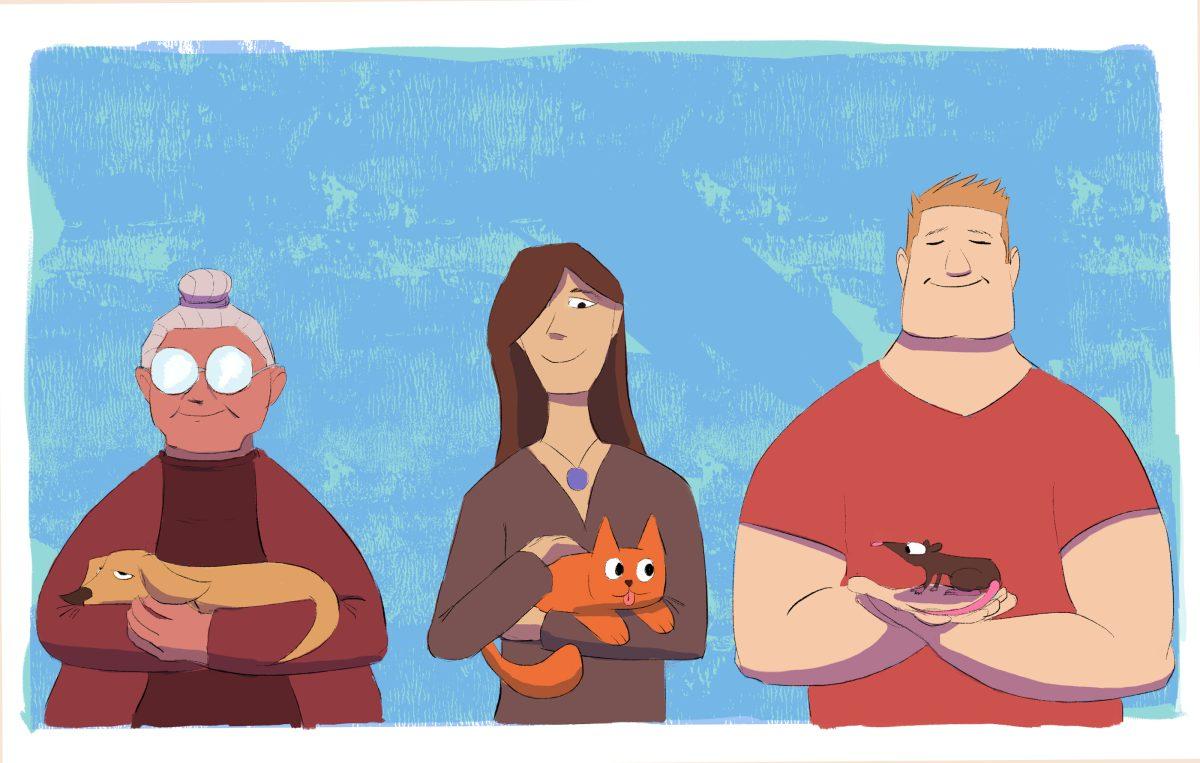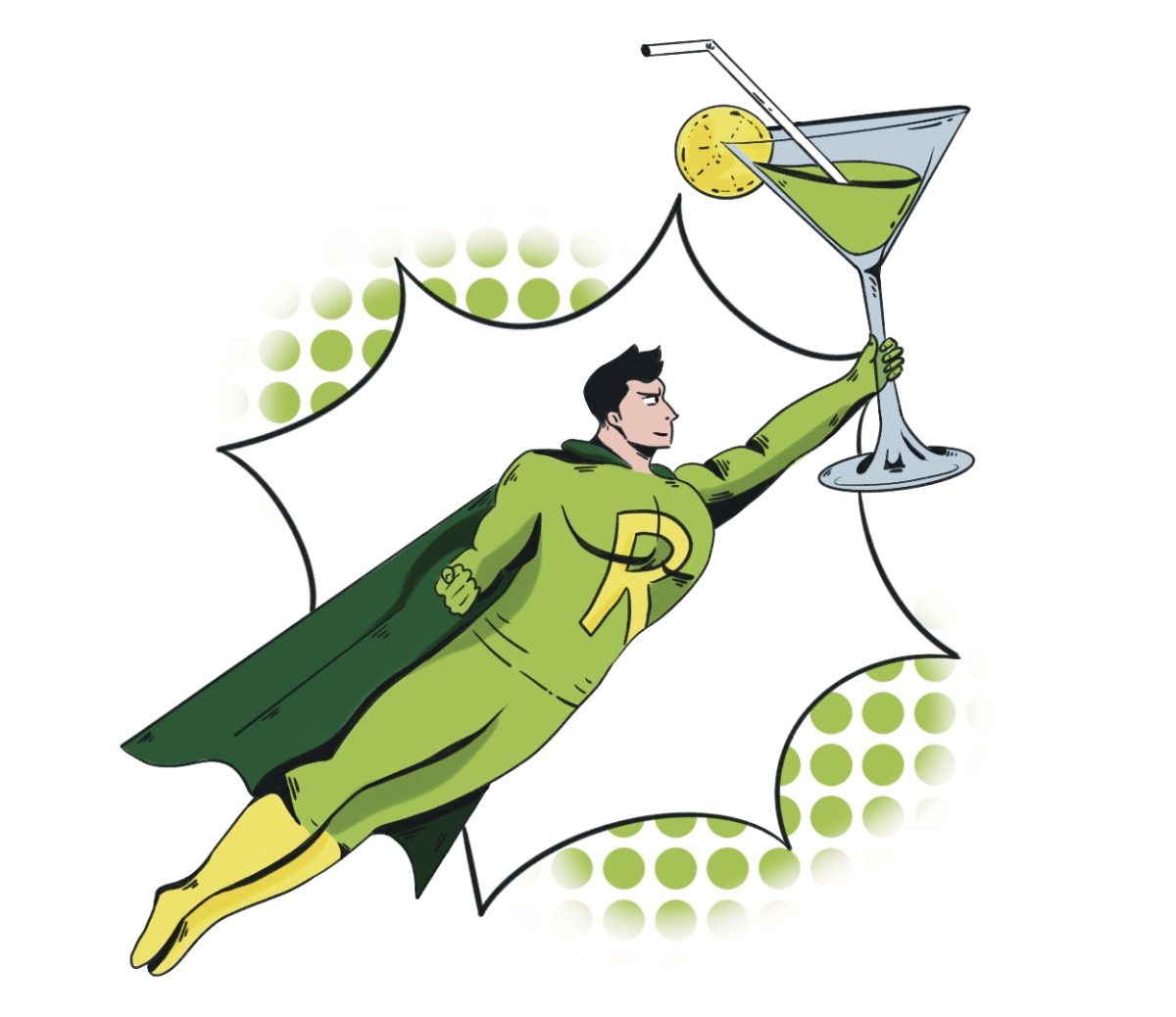When UO freshman Makenna Ertell moved into Earl Hall on campus last fall, her cat Wyatt attracted some unexpected attention.
“For the first two weeks of school, people would just stop in my window and stare at him,” Ertell said. “I had to make a little sign saying ‘If the windows are shut, please don’t peer in!’”
It’s no surprise Wyatt was such a novelty to passing students. Wyatt is an emotional support animal (ESA), which makes him an exception to UO’s no-pet policy for students living on campus. The Americans with Disabilities Act (ADA) defines ESAs as “animals that provide comfort just by being with a person,” a growing category of at least 200,000 in the U.S. as of 2019.
Ertell has Tourette’s syndrome and anxiety, and she experiences tic attacks and panic attacks. She said having Wyatt as a comforting presence helps minimize the frequency of her symptoms.
“When I’m having a tic attack, he’ll usually sit in my lap, or I’ll go and hold him to calm myself down,” Ertell said. “If it’s an anxiety attack, he’ll come up and rub against my leg or something like that. Just keeping me company helps.”
ESAs and service animals are not the same thing. Service animals are dogs trained to perform specific tasks for an individual with a disability, while ESAs are untrained; as such, the ADA does not require ESAs to be accommodated in most circumstances. However, the Fair Housing Act requires housing providers to allow the use of animals that “provide emotional support,” allowing for accommodation in apartment complexes or college dormitories.
According to Katie Wolf, assistant director of the Accessible Education Center, ESAs are generally more appropriate for students with mental health related disabilities. “Typically they work with students who might have depression, anxiety, PTSD,” Wolf said. “Anyone who might have functional limitations that can rise to the level of disability.”
Junior Annie Craven is another UO student whose ESA, her cat Milo, has helped her manage her symptoms. Craven, an RA in Global Scholars Hall, has social anxiety that sometimes makes it difficult for her to leave her room or get out of bed.
“When Milo lays on top of me and purrs, he can help me calm down when I’m feeling anxious,” Craven said. “Having a cat also forces you to get up and do something. They will not let you not do anything!”
Students seeking accommodation for their ESA have to contact the Accessible Education Center, which begins the process of working with the student. Wolf said, while each request is evaluated on a case-by-case basis, students must provide detailed documentation from a mental healthcare practitioner advocating for the ESA, as well as their own personal summary of how the ESA might help mitigate their symptoms.
“It’s a lengthy process, but it’s worth it,” Craven said.
From there, University Housing works out the specific details of the accommodation, including information about the specific animal and emergency contacts in the event of the owner’s absence.
“In most cases, if it’s a small cat or something, that’s pretty typical of ESAs, but there might be some more unusual animals where Housing would need to assess health and safety risks,” Wolf said.
Craven couldn’t decide whether to adopt a cat for a couple of years before meeting Milo. She encourages students to go with their gut — but also keep in mind the implications of adopting an ESA.
“I think it can be really easy to view ESAs as just a tool to help with our mental illness, but you’re also adopting an animal,” Craven said. “Before you decide to adopt an ESA, weigh out all the options… And if your gut is thinking this would be helpful, don’t be scared of that either.”
While Ertell initially had misgivings about bringing her cat to college, she can’t imagine her life without him — and urges students who feel they need ESAs to seek support. She’s even started an Instagram account for Wyatt: @wyattkittenman.
“The first few weeks, I was like ‘I don’t know if this is such a good idea’… But now I’m so happy I made this decision,” Ertell said. “It has saved my little depressed life.”















